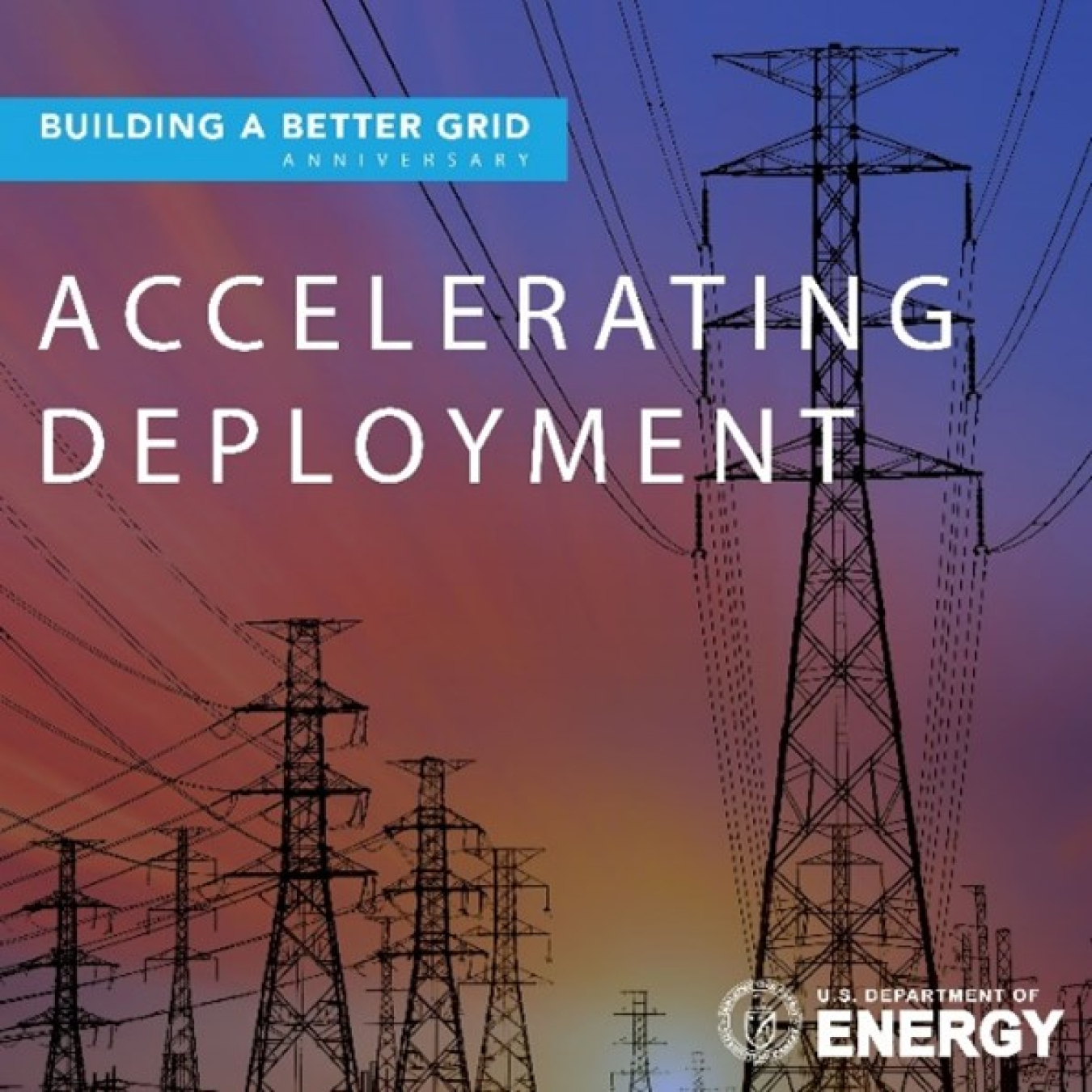
The Department of Energy's Building a Better Grid Initiative, the Bipartisan Infrastructure Law, and Inflation Reduction Act all work together to help deploy upgraded and new electric transmission and distribution lines across the U.S. Here’s how GDO is working to make it happen.
Did you know that more than 70 percent of U.S. transmission lines are at least 25 years old? The pathway to a resilient, clean, and reliable electric grid requires changing this statistic for the better. It is estimated that to reach the nation’s clean energy goals existing, aging systems need to be upgraded and new transmission lines need to be built—to the tune of a 60% expansion by 2030. Upgrading existing transmission and distribution lines, as well as building new interregional lines and supporting local distribution needs, are essential to maintaining efficiency and reliability—not to mention adapting to increasing integration of renewable energy, transportation and building electrification, clean and distributed energy technologies, diversified end-use needs, and more frequent and intense weather driven by climate change. The Building a Better Grid Initiative, which turned one year old last week, is doing just that.
Through the initiative, the Grid Deployment Office works to support the buildout of long-distance, high-voltage transmission facilities and distribution system improvements. Innovative and collaborative Federal financing mechanisms are a critical piece of this puzzle. In marking the one-year anniversary of the Initiative, we’ve been looking at progress to date. Today, we’re digging into the Transmission Facilitation Program (TFP).
Launched in November 2022 and supported by the Bipartisan Infrastructure Law, the TFP is a $2.5 billion revolving fund designed to help overcome the financial hurdles to developing new, large-scale, interregional transmission lines and upgrading existing transmission across the country. It may also support the connection of microgrids in select regions.
With a focus on supporting projects that would not be constructed without federal financial assistance, DOE is authorized to borrow up to $2.5 billion through three facilitation tools:
- Capacity contracts with eligible projects, where DOE would serve as an “anchor customer” to buy up to 50% of planned line rating for up to 40 years and sell the contract to recover costs;
- DOE participation in public-private partnerships within a national interest electric transmission corridor (NIETC) and necessary to accommodate an increase in electricity demand across more than one state or transmission planning region; and
- Loans from DOE.
In seeking to support transmission deployment, DOE also recognizes the importance of doing so equitably and in support of local communities. Eligible projects must not only contribute to the country’s energy technology and climate goals, but also promote the following outcomes:
- Create good paying, high quality, local jobs.
- Advance diversity, equity, inclusion, and accessibility for all, including people of color and others who have been historically underserved, marginalized, and adversely affected by persistent poverty and inequality.
- Support meaningful community and labor engagement.
- Contribute to the goal that 40% of the overall benefits of certain federal investments flow to disadvantaged communities.
The first Request for Proposals for the TFP is currently open, with an application deadline of February 1, 2023. This first application cycle is focused on applicants seeking capacity contracts for eligible projects that will be ready to start construction no later than December 31, 2027.
While the TFP is only in its first application cycle, it is designed to be a permanent program that recoups costs and reinvests proceeds to allow DOE to provide critical financial support to accelerate transmission deployment (including increasing capacity of existing systems) across multiple projects over time. To learn more about how projects will be prioritized within the TFP, what projects are eligible for participation, how the TFP will interact with existing planning processes, and how it compares to other federal financing available, check out GDO’s TFP FAQs.
Note: This blog post is part of a series in celebration of the one-year anniversary of the launch of the Building a Better Grid Initiative. Join us as we look at different components of the Initiative in action, learn about the accomplishments achieved, and get a preview of what’s to come. Learn more about the Building a Better Grid Initiative.
